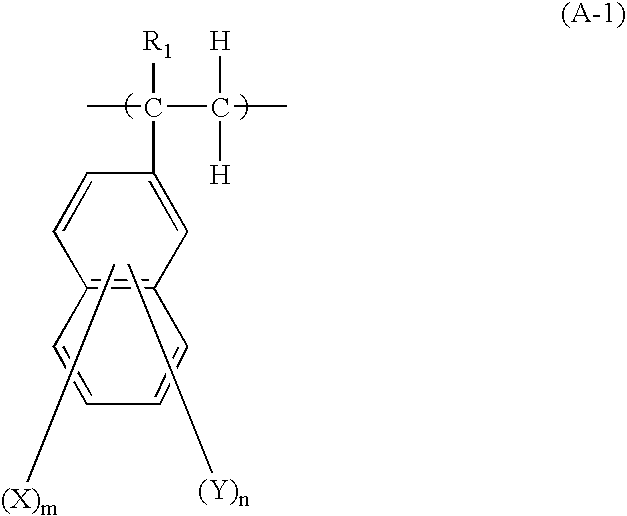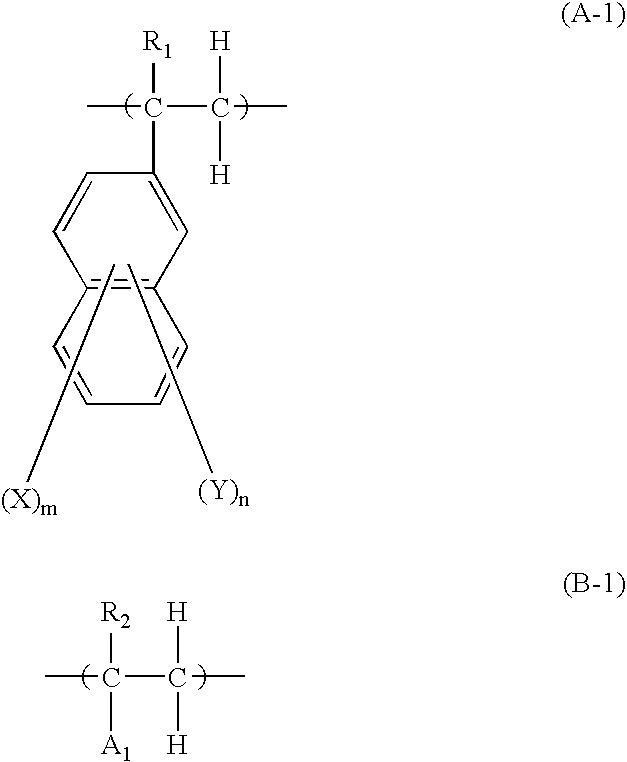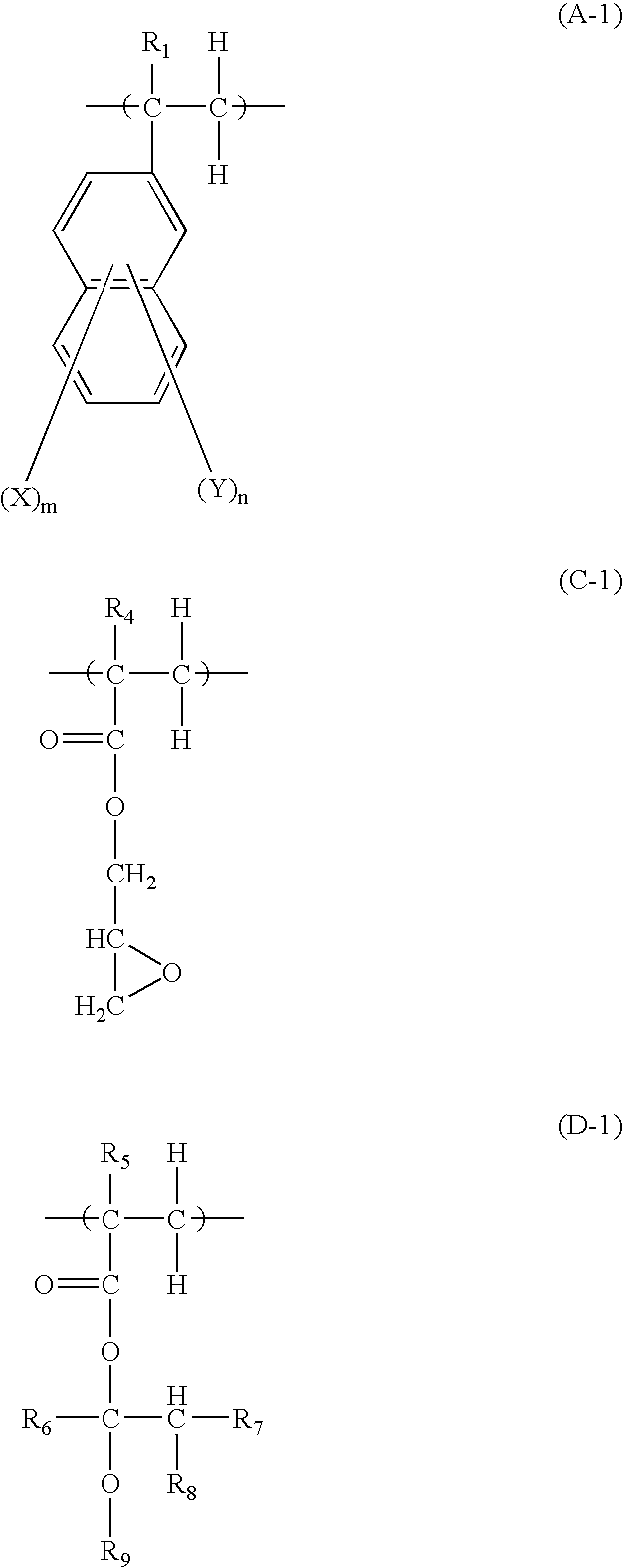Underlayer Coating Forming Composition for Lithography Containing Naphthalene Ring Having Halogen Atom
- Summary
- Abstract
- Description
- Claims
- Application Information
AI Technical Summary
Benefits of technology
Problems solved by technology
Method used
Image
Examples
synthetic example 1
[0123] In 17.97 g of propylene glycol monomethyl ether acetate, 2.00 g of 1-ethoxyethyl methacrylate (product of Honshu Chemical Industry Co., Ltd.), 1.799 g of glycidyl methacrylate, and 5.902 g of 8-bromo-2-vinylnaphthalene (product of Nippon Steel Chemical Co., Ltd.) were dissolved, nitrogen was flowed to the reaction solution for 30 minutes, and then the temperature was raised to 70° C. While maintaining the reaction solution at 70° C., 0.077 g of azobisisobutyronitrile and 0.077 g of 1-dodecane thiol were added. After stirring under nitrogen atmosphere at 70° C. for 8 hours, 0.021 g of 4-methoxyphenol was added to obtain a solution containing a copolymer of 1-ethoxyethyl methacrylate, glycidyl methacrylate and 8-bromo-2-vinylnaphthalene. GPC analysis of the resulting polymer showed that it had a number average molecular weight Mn of 15000 and a weight average molecular weight Mw of 28500 (in terms of standard polystyrene).
synthetic example 2
[0124] In 25.7 g of propylene glycol monomethyl ether acetate, 2.0 g of 2-hydroxyethyl acrylate and 16.08 g of 8-bromo-2-vinylnaphthalene (product of Nippon Steel Chemical Co., Ltd.) were dissolved, nitrogen was flowed to the reaction solution for 30 minutes, and then the temperature was raised to 70° C. While maintaining the reaction solution at 70° C., 0.18 g of azobisisobutyronitrile and0.18 g of 1-dodecane thiol were added. After stirring under nitrogen atmosphere at 70° C. for 8 hours, 0.05 g of 4-methoxyphenol was added to obtain a solution containing a copolymer of hydroxyethyl acrylate and 8-bromo-2-vinylnaphthalene. GPC analysis of the resulting polymer showed that it had a number average molecular weight Mn of 10000 and a weight average molecular weight Mw of 24000 (in terms of standard polystyrene).
synthetic example 3
[0125] In 179.7 g of propylene glycol monomethyl ether acetate, 20.0 g of 1-ethoxyethyl methacrylate (product of Honshu Chemical Industry Co., Ltd.), 17.99 g of glycidyl methacrylate, and 39.04 g of 2-vinyinaphthalene (product of Nippon Steel Chemical Co., Ltd.) were dissolved, nitrogen was flowed to the reaction solution for 30 minutes, and then the temperature was raised to 70° C. While maintaining the reaction solution at 70° C., 0.77 g of azobisisobutyronitrile and 0.77 g of 1-dodecane thiol were added. After stirring under nitrogen atmosphere at 70° C. for 8 hours, 0.21 g of 4-methoxyphenol was added to obtain a solution containing a copolymer of 1-ethoxyethyl methacrylate, glycidyl methacrylate and 2-vinylnaphthalene. GPC analysis of the resulting polymer showed that it had a number average molecular weight Mn of 10500 and a weight average molecular weight Mw of 21000 (in terms of standard polystyrene).
PUM
| Property | Measurement | Unit |
|---|---|---|
| Composition | aaaaa | aaaaa |
Abstract
Description
Claims
Application Information
 Login to View More
Login to View More - R&D
- Intellectual Property
- Life Sciences
- Materials
- Tech Scout
- Unparalleled Data Quality
- Higher Quality Content
- 60% Fewer Hallucinations
Browse by: Latest US Patents, China's latest patents, Technical Efficacy Thesaurus, Application Domain, Technology Topic, Popular Technical Reports.
© 2025 PatSnap. All rights reserved.Legal|Privacy policy|Modern Slavery Act Transparency Statement|Sitemap|About US| Contact US: help@patsnap.com



